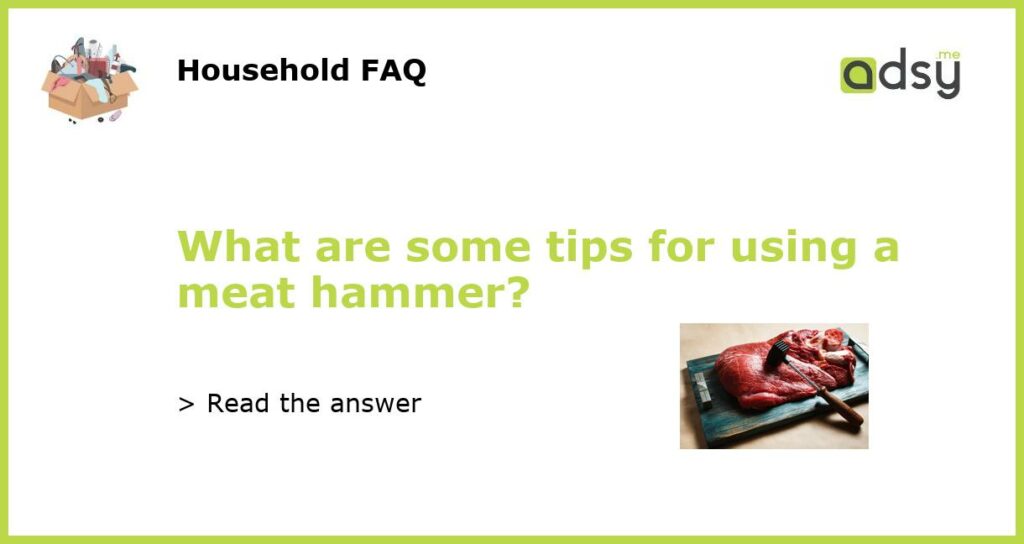Tips for Using a Meat Hammer
Meat hammers or meat mallets are great tools for tenderizing meat and breaking down tough fibers to make it easier to cook and chew. Here are some tips for using a meat hammer to get the most out of this versatile kitchen tool.
Choose the Right Hammer
Meat hammers come in different shapes, sizes, and materials, so it’s important to select the one that suits your needs and preferences. A traditional meat hammer has two flat surfaces, one smooth and one textured, while a meat tenderizer may have multiple pointed or spiked surfaces. Wooden hammers are lightweight and gentle on the meat, while metal hammers are heavy and effective for tough cuts. Consider the type of meat you will be tenderizing and choose the hammer accordingly.
Use the Right Technique
When using a meat hammer, it’s important to use the proper technique to avoid damaging the meat or injuring yourself. Place the meat on a cutting board or a sturdy surface and start pounding lightly with the flat side of the hammer, working from the center towards the edges. Avoid using too much force or hitting the same spot repeatedly as this can cause the meat to become mushy or torn. Turn the meat over and repeat on the other side.
Experiment with Flavors
Using a meat hammer not only tenderizes meat but also flattens it, making it easier to infuse with flavors and seasonings. Before using the hammer, marinate the meat with your favorite ingredients, such as garlic, herbs, spices, or citrus juices. This will not only enhance the taste but also help to tenderize the meat further. You can also add a dry rub or coating, such as breadcrumbs or Parmesan cheese, to create a crispy and flavorful crust.
Try Different Cuts of Meat
Meat hammers are especially useful for tough cuts of meat, such as flank steak, pork chops, or chicken breasts. However, you can also try using it on other cuts, such as beef sirloin or lamb leg, to make them more tender and juicy. Just adjust the pounding time and force depending on the thickness and toughness of the meat. For instance, thinner cuts require less time and pressure, while thicker cuts may need a longer and firmer pounding.
Clean and Store Properly
After using a meat hammer, clean it thoroughly with soap and water and dry it with a towel or let it air dry. Avoid soaking the hammer or leaving it wet as this can damage the material or cause rust. Store the hammer in a dry and clean place, away from moisture, heat, or direct sunlight. You can also use a protective sheath or cover to keep the hammer safe and prevent it from scratching other utensils or surfaces.






